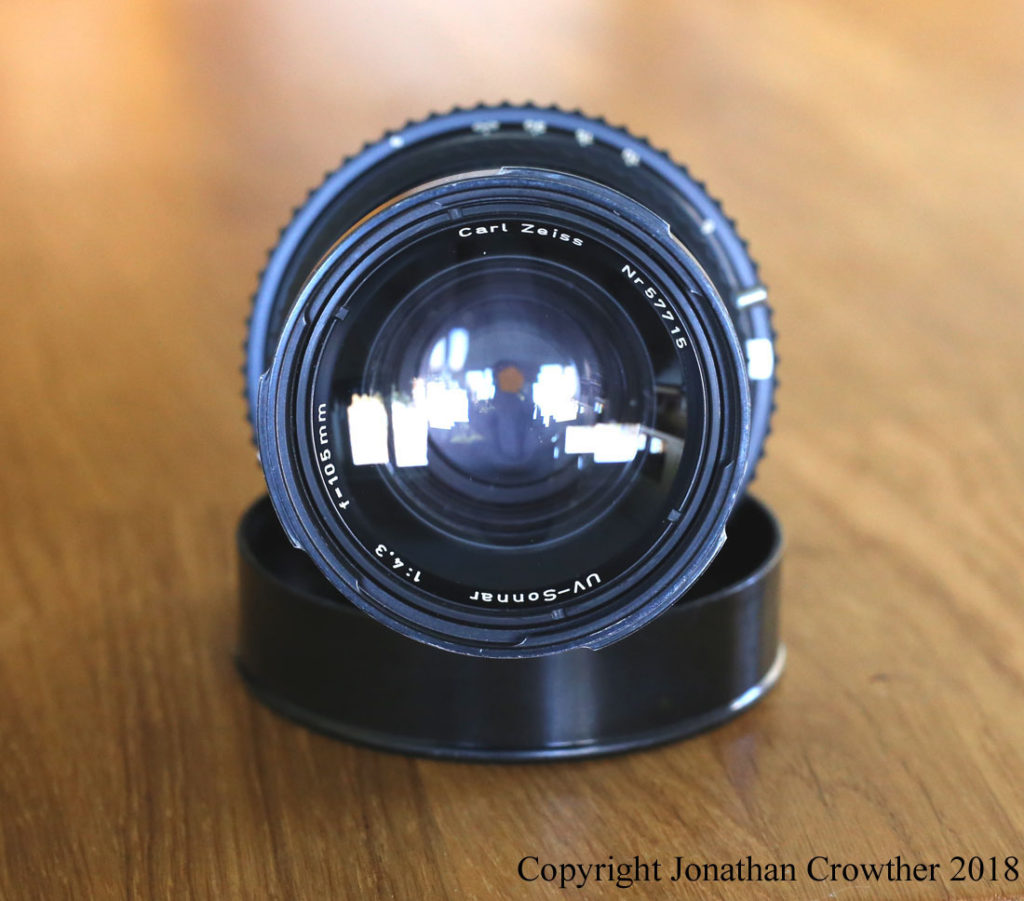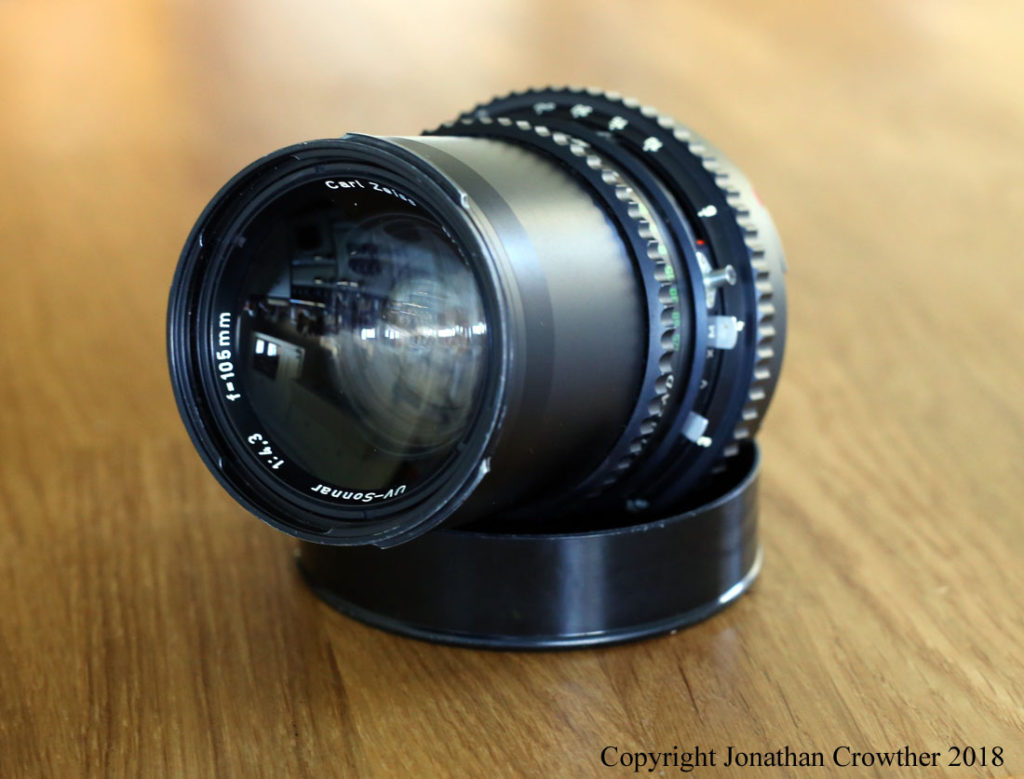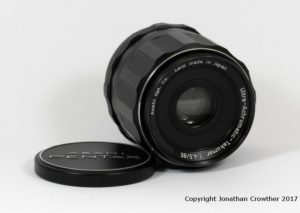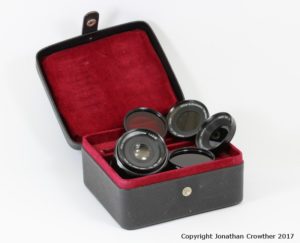Need a rapid and cost effective measurement of the optical transmission properties of something? Maybe a camera filter for a graph to provide data for a paper you’re writing, or do you want to know whether your product you’re interested in marketing which is supposed to block UV is actually doing so? I now offer a light transmission measurement service. Read more about it here, along with some examples of the type of things I can measure. Contact me to find out more…..
Hasselblad Zeiss UV Sonnar 105mm – The Sonnar has landed
A very special lens has arrived in the lab, a Zeiss Hasselblad UV Sonnar 105mm f4.3. Consisting of quartz and calcium fluoride lenses, this was one of the ones designed for space exploration work with NASA. An amazing piece of history (manufacturing date shows this is one month younger than I am, so unfortunately it would have never made it to the moon), and now to be used for my UV imaging work.
New addition – Equipment and Capability list
I’ve been asked to provide an up to date list of equipment and capabilities I currently have access to for research, so here it is;
Ongoing I’ll be updating this as I acquire new capabilities, whenever they become available for use.
New article – Monochrome camera imaging
Having recently acquired a Multispectral Monochrome converted Canon EOS 5DSR camera for my imaging work, check out my new article on Monochrome camera photography where I cover the technique along with it’s pros and cons;
https://jmcscientificconsulting.com/testing/monochrome-camera-imaging/
Watch out for a new article on Multispectral photography in the near future.
Black 2.0 – optically neutral matt black paint
I recently found myself needing a black paint for a project I was working on that would be a) very absorbent of light, b ) as neutral as possible over a wide range of wavelengths, and c) be cheap and readily available. A chance conversation with a colleague put me on to Black 2.0, which is a paint developed by a UK artist Stuart Semple (http://stuartsemple….k-art-material/). This is supposedly extremely matt black, and there’s a fascinating story behind the development of it, which is highly typical of the art world and makes for a great read (put simply, it was developed to provide the wider art world a really black paint, after a UK company developed something called Vantablack which absorbs more than 99% of light, and then restricted who could buy it to scientists and one artist in the UK).
Anyway enough of the back story – just how black is Black 2.0? Given I have access to a nice UV Vis spectrometer I got hold of a sample of this material, painted it onto some white card, and compared the amount of light it reflected to a the black tile on a X-rite/Gretag Macbeth Colour Checker chart (old version, pre November 2014). And this is what it looks like;

I was very surprised to see Black 2.0 reflected less light than the X-rite/Gretag Macbeth Colour checker chart black (GM black in the graph). So it’s blacker than a black photographic standard – the proverbial black cat in a coal cellar. Needless to say I was very impressed with it, as it fitted my key requirements (neutral, low reflectivity, cheap and readily available), oh and smells of cherries too. All for the princely sum of £12 for 150ml, which they reckon is enough to cover about 1-1.5m2.
Check out this paint and Stuarts work at http://stuartsemple.com/art/
New article on UV induced fluorescence and skin
Fluorescence photography is a valuable tool for visualising and documenting the skin, giving details not visible under normal visible light imaging. Check out my new article showing how UV induced visible light fluorescence can be used to provide valuable information about skin dryness and and the presence of bacteria, here.
Arrival of Asahi Ultra Achromatic Takumar 85mm f4.5 lens
I am very excited to have recently acquired an Asahi Pentax Ultra Achromatic Takumar 85mm f4.5 lens. A bit of a legend in the imaging world, this extremely rare lens was made in the late 1960s using Calcium fluoride and Quartz elements, and is chromatically corrected for imaging in UV, visible and IR regions. Look out for a more detailed review in my ‘Techniques’ section soon.




